DATABASE FOR THE SCENES OF VITICULTURE AND WINEMAKING IN ANCIENT EGYPT
The “Irep en Kemet”, Wine of Ancient Egypt, research project aims to study the ancient Egyptian wine culture, including iconography, texts, artifacts and organic material.
After four years of work, our research group has developed the first complete database of the viticulture and winemaking scenes from the Ancient Egyptian private tombs.
The bibliographic and scenes databases of the ‘Irep en Kemet’ project will also be an on-line documentation archive contributing to the dissemination and protection of the Egyptian heritage.
The project’s website promotes visibility to the study of wine in ancient Egypt and the dissemination of archaeological knowledge regarding wine in Antiquity.
INSTITUTS AND LIBRARIES
Griffith Institute, Oxford University, Oxford (UK)
Egypt Exploration Society, London (UK)
Institut Français d’Archéologie Orientale, Cairo (Egypt)
Institut d’Estudis del Pròxim Orient Antic (IEPOA), Universitat Autònoma de Barcelona (UAB)
TOMBS, OBJECTS AND MONUMENTS
The bibliographic research of the scenes of viticulture and winemaking in the ancient Egyptian private tombs resulted in the identification of some unpublished scenes. Furthermore, some of the scenes of viticulture and winemaking were not available for publication, because of copyrights or because they were never drawn or photographed.
Therefore, and under permission of the Permanent Committee of the Supreme Council of Antiquities (SCA) of Egypt, the project team planned a photographic survey for the private tombs with viticulture and winemaking scenes all over Egypt in 2013.
The photographic mission has allowed us to complete the analysis of the scenes and their associated texts.
The photographic mission was successfully accomplished between June and December 2013 in 21 archaeological sites in Upper Egypt: Aswan, Luxor and Sohag; Middle Egypt: in Asiut, Miniya and Beni Sueif; and Lower Egypt: Giza.
The database of the scenes of viticulture and winemaking in the ancient Egyptian private tombs include the following items about each scene: record number, scene description with the different steps according to the theme, that is, viticulture or winemaking. The steps represented in the viticulture scenes include: vinery, taking care of the vine, grape harvest and counting the baskets. In the winemaking scenes, the steps represented are: transporting grapes to a press, pressing grapes, heating and filtering, pressing the remains in a sack press, filling wine jars, fermentation, offerings to goddess Renenutet, wine tasting, sealing the wine jars, labelling wine jars, counting wine jars, transporting wine jars to a cellar, refrigeration during fermentation, and storing wine jars in a cellar.
The scene-detail database also include: scene details, annotations, scene type and condition, text (inscription and translation) and image/photo. Moreover, the dating (period, dynasties and kings), provenance (governorate, archaeological site, timb name and number, and location inside the tomb) and present location (if it's the same as provenance or in a museum, then location inside the museum and inventory number, or others if it's not a museum) indicated. Finally, the tomb information: type of tomb and tomb's owner (names and titles of the owner).
In the end, the references to the scene are shown.
The bibliographical database include the serial number, type of article/book, authors, title, website, online link, periodical/ journal/ encyclopaedia/ dictionary, edition, editors, pages, plates/ plans, publisher, place of publication, year of publication, author abbreviation and remarks. It has now 197 entries.
The WINE OF ANCIENT EGYPT (Irep en Kemet) research project studies the wine culture of Ancient Egypt. The aims are documenting the complete corpus of wine from Ancient Egypt, and analysing the relevant data including iconography, texts, artefacts and organic material from a multidisciplinary point of view. The research project also seeks to reveal the significance of the ancient Egyptian wine culture legacy in the Mediterranean region.
The project’s website promotes the study of wine in Ancient Egypt and the dissemination of archaeological knowledge regarding wine in Antiquity.
EGYWINE PROJECT 2016-2018
The ‘Ancient Egypt’s Wine Rebirth’ (2016-2018) EGYWINE Project, led by Dr. Maria Rosa Guasch-Jané, is a Marie Sklodowska-Curie Action post-doctoral grant at Mondes Pharaoniques laboratory of the Sorbonne University in Paris (France) and financially supported by the European Commission (H2020-MSCA-IF-2015).
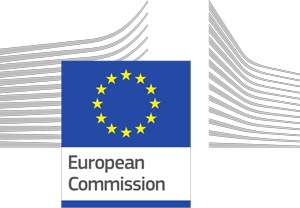
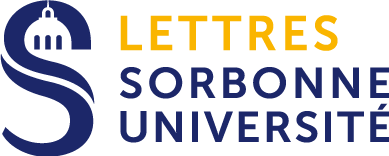
EGYWINE Project addresses the viticulture origins, winemaking and preservation of the ancient Egyptian wines, and the diffusion of the Egyptian wine culture legacy to Europe. EGYWINE Project originality is to study, through pioneering techniques, how the Egyptian wines were made to understand the ancient traditional elaboration methods to progress on knowledge and heritage conservation.
Project Team
Dr. Maria Rosa Guasch-Jané is post-doctoral researcher Marie Sklodowska Curie of the EGYWINE project (H2020-MSCA-IF-2015) at the Mondes Pharaoniques laboratory (UMR 8167 ‘Orient et Méditerranée’) Sorbonne University in Paris.
EGYWINE Project members have highly specialized labs and are leaders of the below areas of study:
* Ancient Egypt: Professor Pierre Tallet, director of Mondes Pharaoniques lab (UMR8167 ‘Orient et Méditerranée’) at Sorbonne University in Paris.
* Paleogenomics: Professors Thierry Grange and Eva-Maria Geigl, directors of the ‘Epigenome and paleogenome’ laboratory of the Institut Jacques Monod (UMR7592), University Paris-Diderot/CNRS.
* Grapes and wine: Professor Jean-Michel Boursiquot, MontpellierSupAgro-INRA (UMR1334 ‘Amélioration Génétique et Adaptation des Plantes’).
* Ancient Egyptian ceramics: Dr. Sylvie Marchand, director of the ceramics lab of the Institut Français d’Archéologie Orientale (IFAO) in Cairo.
WEBSITE WINE OF ANCIENT EGYPT SINCE 2013
Design, creation and development of the website by Josep Socorregut Domènech of Sistemes de Gestió de Patrimoni (SGP). Website creation financially supported by Vinseum, the Museum of the wine cultures in Catalonia, and Perelada Fine Estates.
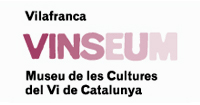
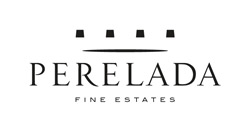
VITICULTURE AND WINEMAKING SCENES PROJECT 2011-2014
The ‘Study of viticulture and winemaking in Egyptian tombs’ (2011-2014) was a three-year research project directed by Dr. Maria Rosa Guasch Jané at the Faculty of Social and Human Sciences of the University Nova in Lisbon (Portugal) and funded by the Fundação para a Ciência e a Tecnologia (FCT) of the Portuguese Ministry of Education and Science.
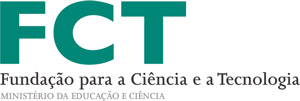
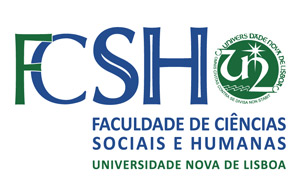
The project aim was to document and investigate the viticulture and winemaking scenes in the Ancient Egyptian private tombs, a comprehensive study of all the images, including the texts associated to them. This research project has successfully produced a researchable, inclusive bibliographic database of wine, viticulture and winemaking in ancient Egypt, as well as a researchable scene-detail database of viticulture and winemaking scenes in the Egyptian private tombs throughout the ancient Egyptian history, in a total of 92 records. Furthermore, after a research in-depth in the Egyptological archives unpublished scenes have been unveiled.
A complete photographic survey was also achieved permitting the record and study of all the scenes and the possibility of knowing the condition of all the tombs in an exact time frame. The project’s second phase involves the creation of an online georeferenced map of Egypt, illustrating the ancient Egyptian tombs that include viticulture and winemaking scenes. This photographic, documentary and analytical study is an important tool for the future documentation and conservation of the archaeological heritage of Egypt.
Project Team
Maria Rosa Guasch-Jané (project director): BS in Pharmacy (1996) and Masters’ degree in Nutrition and Food Science (1998) by the University of Barcelona; Masters’ degree in Oriental Studies-Egyptology (2000) by the Autonomous University of Barcelona; PhD in Pharmaceutical Sciences (UB, 2005) for the doctoral thesis entitled “Wine in ancient Egypt: a cultural and analytical study”.
Sofia Fonseca: BA in Archaeology (1997) at University de Coimbra (Portugal) and Masters’ Degree in Egyptology (2001) by the Autonomous University of Barcelona.
Mahmoud Ibrahim: BA in Egyptology (1998) at Cairo University (Egypt) and Master’s degree in Egyptology and Linguistics (2006) at Basel University (Switzerland).
